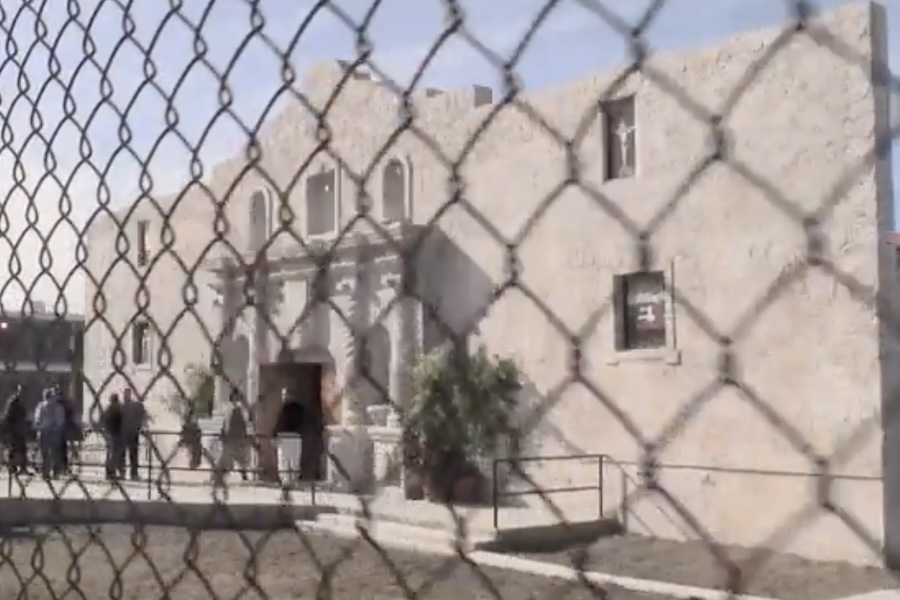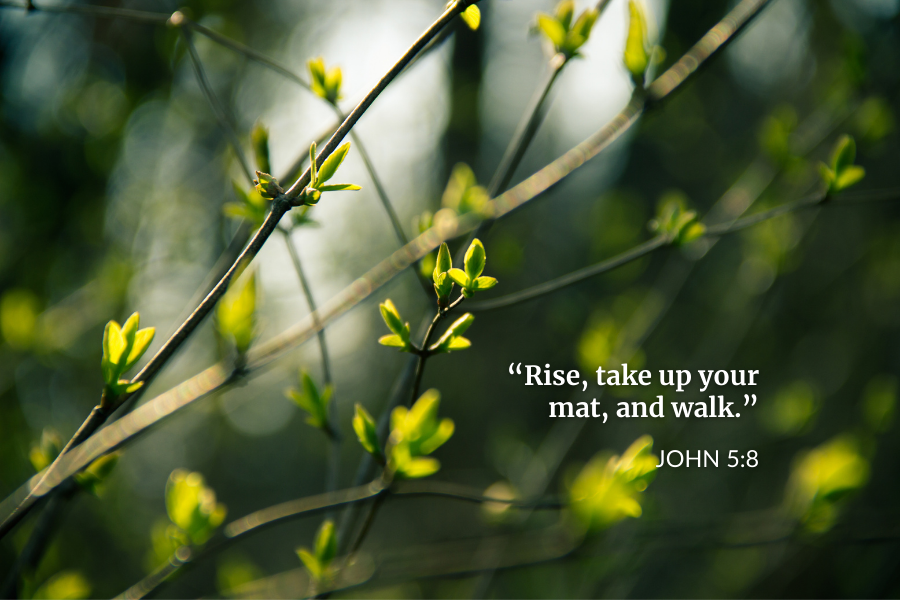“With Jesus I Feel Free… In Prison” — How a Chapel dedicated to Our Lady of Guadalupe at Angola Prison is Transforming the Lives of its Inmates
Originally published in Spanish here.
On December 12, 2013, a chapel dedicated to Our Lady of Guadalupe was dedicated in a maximum-security prison in Louisiana. Ten years have passed now, and the blessings have poured forth generously, as could be expected in a “community” with a devotion to the Virgin of Guadalupe.
The place: Louisiana State Penitentiary, known as “Alcatraz of the South,” or as its inmates refer to it, the “Angola Plantation,” because in the 1800s black slaves from the country of Angola worked on a plantation in this place, and even at that time, it was already used for holding prisoners. For a long time, this prison was considered the bloodiest and cruelest in the United States.
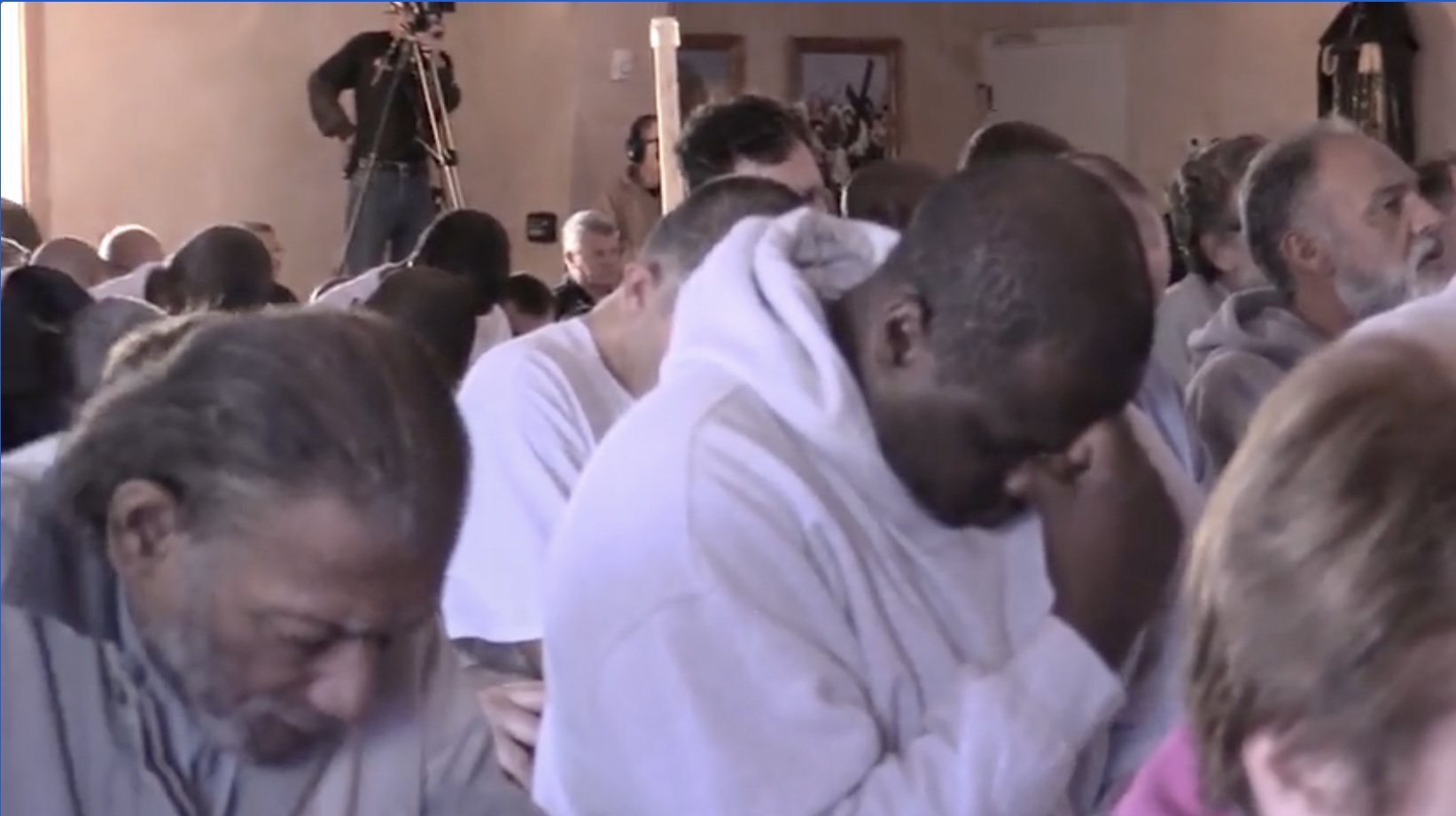
Our Lady of Guadalupe Goes to the Prison
It all started with two families from Pinecrest Academy, a Regnum Christi school in the suburbs of Atlanta, where Regnum Christi member Roberto Sánchez Mejorada, who had children at the school, met Jorge Valdés, a businessman and philanthropist who had made some bad decisions when he was younger. Jorge is an ex-convict who made a radical life change. While he was behind bars, he completed Biblical studies that allowed him to finish his bachelor’s, master’s, and doctorate in theology, validated by Loyola University in Chicago.
In 2011, Jorge invited Burl Cain, who was then warden of the Angola prison, to give a conference at Pinecrest Academy. His objective was to shake up the young people so that they understood that a bad friendship, an indecent job, a dream of easy success, or a moment of debauchery could ruin their lives.
After that talk, Roberto Sánchez Mejorada took on the commitment to organize a father/son mission trip to visit the Angola prison. On that trip he said, “Burl Cain made an impact on me. Jorge did too. Seeing the way he spoke to the inmates, knowing that he could have been condemned there for life along with them, allowed me to believe and understand him,” he said.
In the same year of 2011, Roberto bought an image of Our Lady of Guadalupe with the intention of bringing it to the prison. He invited several businesspeople to accompany him and to give the image to the jail. The prison warden, Burl, was seeking to generate a “moral renewal” in the jail. Angola has a branch of the Baptist Theological Seminary of New Orleans and biblical seminars of Loyola University, from which around 300 inmates have graduated after four years of studies, and are now teachers and ministers inside the prison. “This has allowed us to change the culture and decrase violence. When someone is living a moral life, they don’t steal or commit atrocities,” Cain affirms.
There are nine chapels of different faiths at Angola, built by private donations. “God lives in this prison,” Cain affirmed. But a Catholic chapel was missing. Only in 2013 was it possible to build the chapel, thanks to the support of a group of Mexican businessmen. 300 Hispanic inmates worked on its construction and even painted murals on its walls. The chapel was finished in honor of Our Lady of Guadalupe.
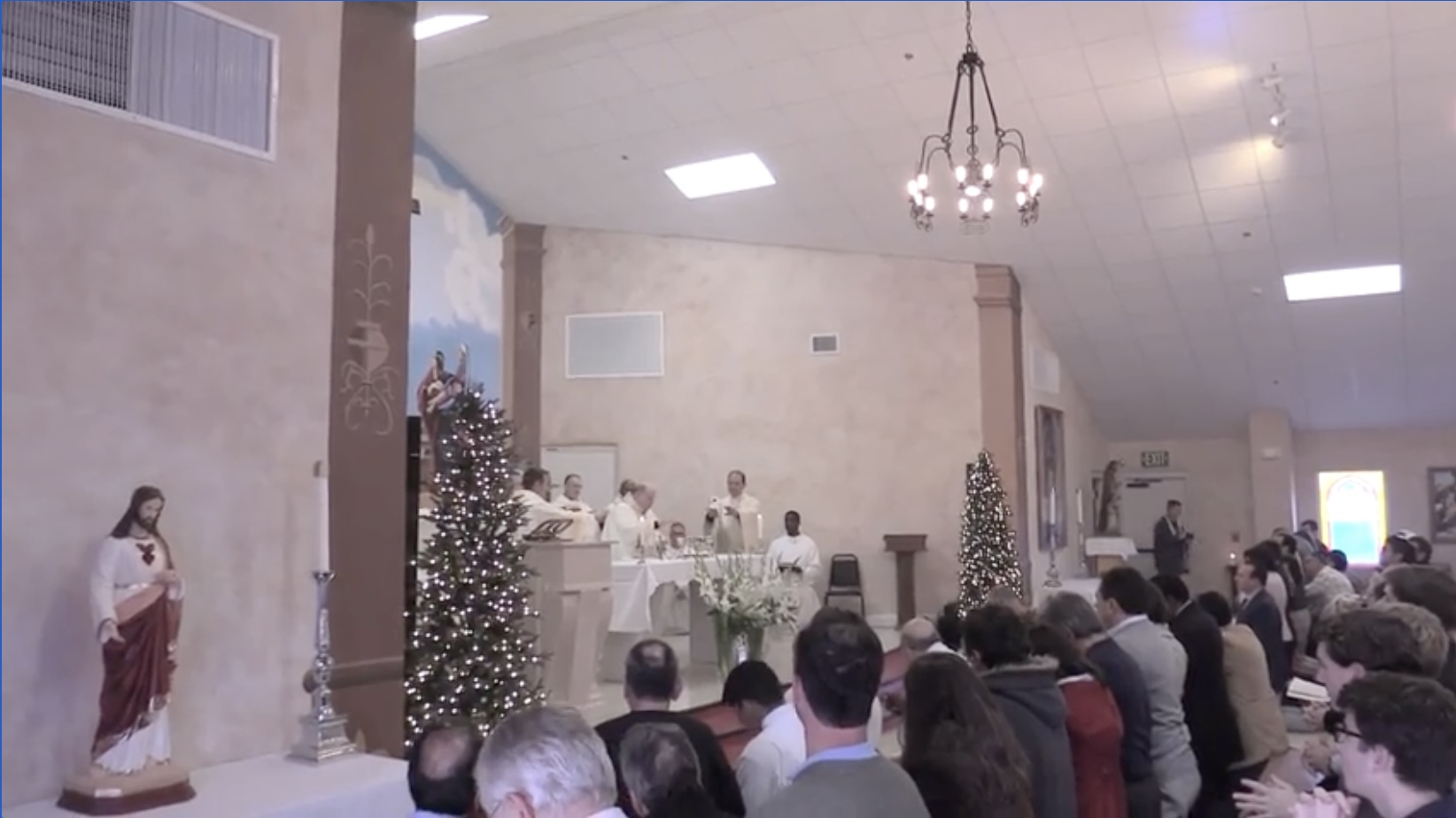
A Second Chance
That December 12th, 2013, a dinner was held to thank so many benefactors who supported the chapel. The cook was Chris, an obliging and well-mannered man. When Chris was 23, he killed his wife following a marital dispute one night when he was drunk and fired a shot from his pistol. Every day he laments that moment in which he left his two young daughters orphans, whom he barely knows.
Another one of the inmates, called “Big Lou,” arrived at the jail when he was 22. One fateful day, he had tried drugs with his girlfriend, and she had suffered an overdose and died. He didn’t know what to do, so he had thrown her into the river and fled by car. He was charged with murder and robbery. Her family has not forgiven him.
Burl Cain implemented programs in the prison that give the inmates the possibility to remake their lives with dignity, becoming honest and renewed individuals who are thankful to God and enjoy a second chance to be free; free behind bars.
Almost all the inmates, even those waiting for death by lethal injection, admit their responsibility: bad friendships, alcohol, drugs, a bad moment. They make sure that this jail with its clear rules, impeccably ordered and clean, in which yelling and swear words are prohibited, has been radically transformed under Cain’s leadership.
In Cain’s office, next to a newspaper clipping of President Kennedy’s assassination, was his wife’s picture. And there he kept some of his most precious mementos: a jar of Jif peanut butter and a jar of strawberry jelly, which the last man executed in the prison requested for his final meal in 2010. He held onto it as a constant reminder that this jail “should be human.” He entrusted the salvation of the convicts to God, as his mother had once told him, and he strove to complete this to the end of his time there.
“You see huge men crying here, sorry for what they have done. Now no one dies alone. Everyone has the opportunity to live and die in peace and with dignity,” says Tonia Faust, a nurse who has worked there since 1998.
An older man who has been incarcerated since 1984 shares, “We don’t have horns or a tail, as some people see us. I was trying to be accepted, and I made wrong decisions, which led me to kill a man and victimize my whole family.” Having accepted his guilt, he now awaits his death in prison hospice, not having seen his children in 30 years.
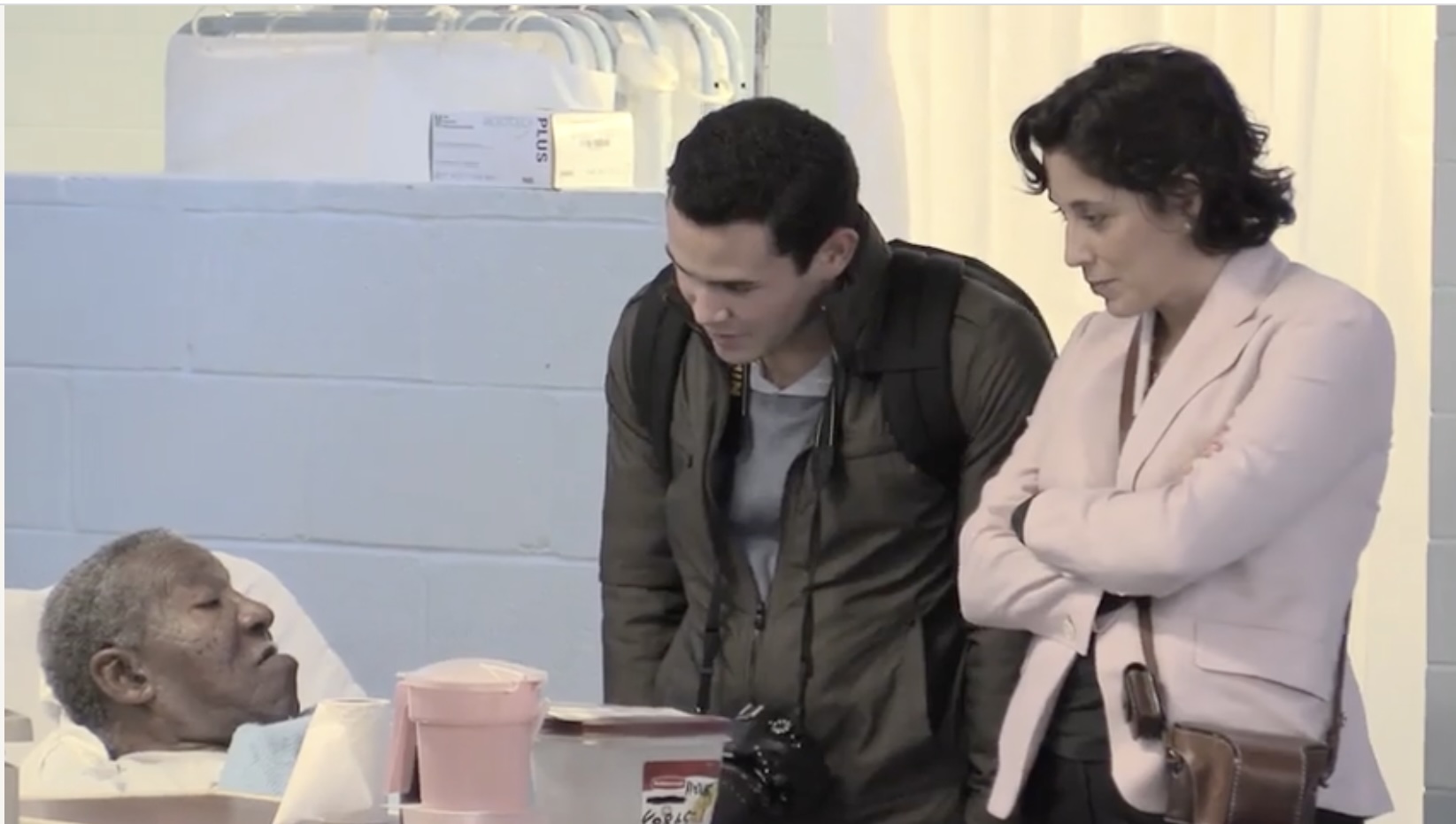
The Blessing
The bishop, with his white chasuble, blessed the chapel. A number of the inmates cried and took the opportunity to go to Confession, among them Miguel, who had painted the chapel’s walls. Words that were overheard from among those present included, “Faith keeps us alive.” “The guilt is too heavy; every day that passes I regret having made bad decisions.” “With Jesus, I feel free in prison.”
The highlight of the chapel’s inauguration was when a letter from Pope Francis was read, in which he congratulated the prison and the chapel’s benefactors. “It’s so amazing that broken men like me can come to this shelter to learn how to love and to realize our potential as human beings,” said Andrew.
December 12, 2023: The Prison and its Inmates are Consecrated to the Sacred Heart
On the 10th anniversary of the chapel of Our Lady of Guadalupe, they held a consecration ceremony to the Sacred Heart of Jesus. On this occasion, a Eucharistic celebration was presided by Fr. Edouard Marot, who travelled from Belgium to give his testimony about the apparition of the Sacred Heart to St. Margaret Mary Alacoque, along with the missionary Alicia Beauvisage,.
“Realize that you can do nothing without Me; I will never cease coming to your aid, as long as you always have your nothingness and your weakness gripped by my strength.”
(Words of the Sacred Heart to St. Margaret Mary Alacoque)
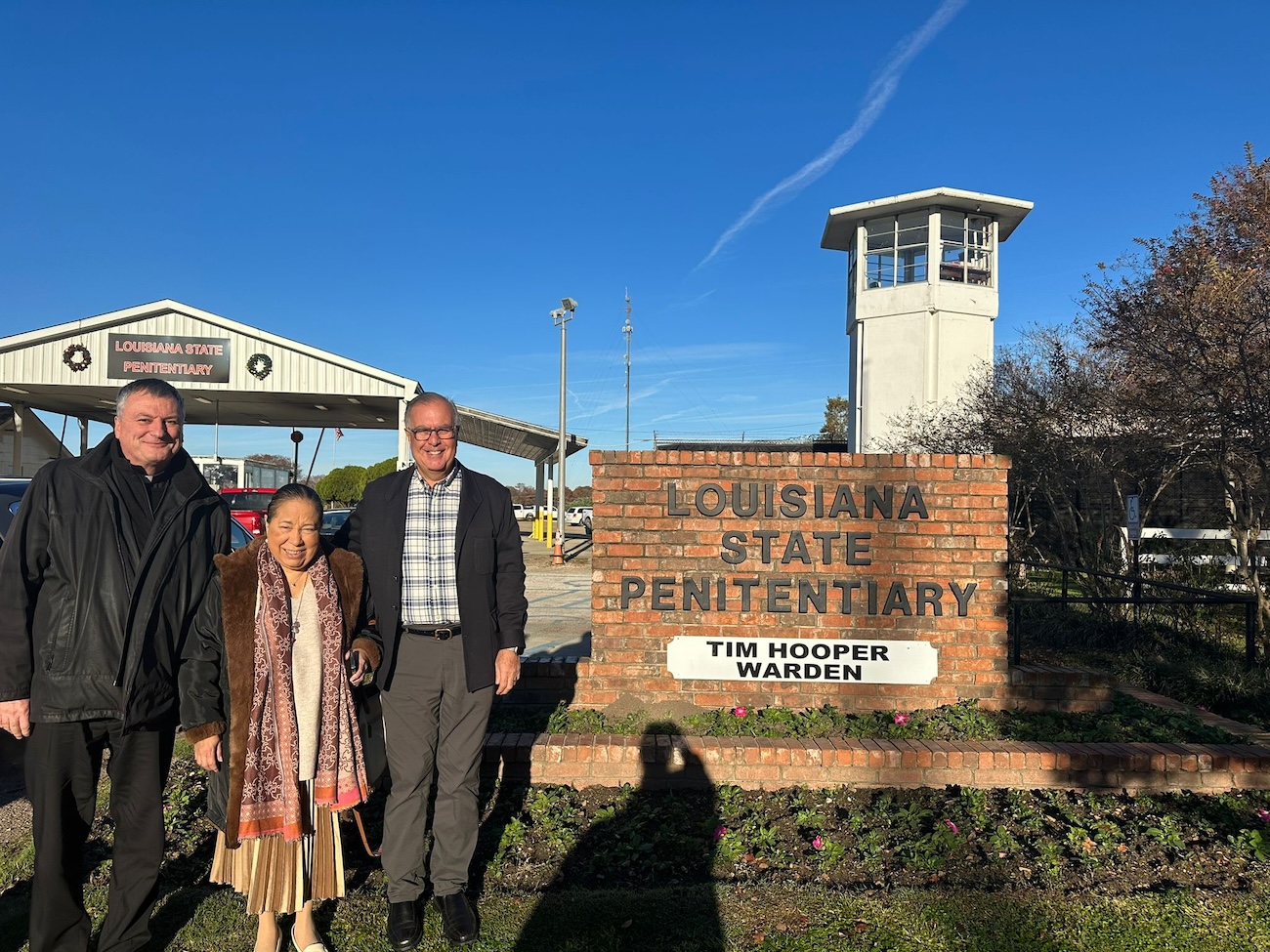
Alicia brought a personal reliquary of St. Margaret Mary Alocoque with her. At the end of her testimony, she asked everyone to close their eyes, in a moment of profound, consoling silence, and place themselves in the Heart of Jesus, and also to place in the Sacred Heart those people they had harmed. Afterwards, Alicia pressed the reliquary to the hearts of the inmates to provide a heart-to-heart “encounter” with Jesus through the intercession of St. Margaret Mary. It was a very powerful moment for everyone present, especially for the convicts, since they had expressed their decision to dedicate an altar on which to place each one of the victims who suffered (and still suffer) for the bad decisions they made during their lives. They know that 99% of the inmates will not leave the prison in their lifetimes. Their dedication is part of that path of transformation they are accomplishing under the mantle of Our Lady of Guadalupe, and now also the Sacred Heart of Jesus.
Under the leadership of Tim Hooper, the prison’s current warden, Angola has developed programs of moral reform and dignified treatment. Deacon Billy Messenger tends to the Catholic community and encourages the faith of each inmate in his spiritual growth with great dedication and commitment.
And the community in Cumming, Georgia, still has a deep connection to the prison. Just a few miles from Pinecrest Academy is St. Brendan the Navigator Catholic Parish, whose pastor is Fr. Mathew Van Smoorenburg, a Legionary of Christ priest. In 2013, the Parish was in need of a corpus for its crucifix at the center of the sanctuary. A benefactor at the parish informed Fr. Matthew that he knew a prisoner in Louisiana who was a talented wood craftsman – one who had never taken on a project of this size but who was skilled with carving life-like images. Inspired by the redemptive possibilities, Fr. Matthew decided to give the prisoner a chance to perform the work.
“My name is Marty James Hebert. I am from the town of Franklin in south Louisiana. When I was 21 years old I got into a fight with a man and killed him. In 1995 I was convicted of 2nd degree murder and sentenced to mandatory life in prison (Louisiana State Penitentiary in Angola).”
Working closely with the Pastoral Council, photo images were forwarded to the prisoner and work began in the early months of 2014.
“When I was asked to carve the life-sized Jesus for the crucifix, I had some doubts … I never worked on anything so large and so life-like. I enlarged a picture I was given and made a pattern of it. But I also wanted to carve my interpretation of the physical aspects of Jesus. He worked as carpenter and therefore would have been strong, but in the last years on earth as He was traveling and teaching He would have eaten modestly, taking only what His body needed…The face was the most challenging. I used all my imagination in how I could make it command a sense of peace.”
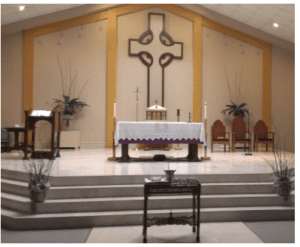
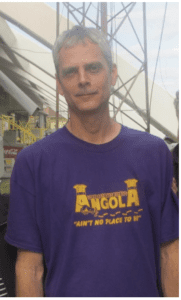
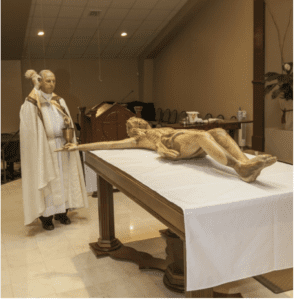
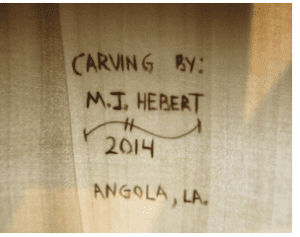
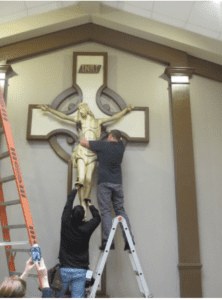
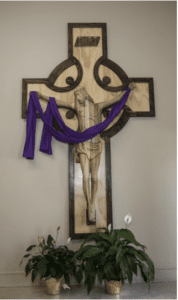
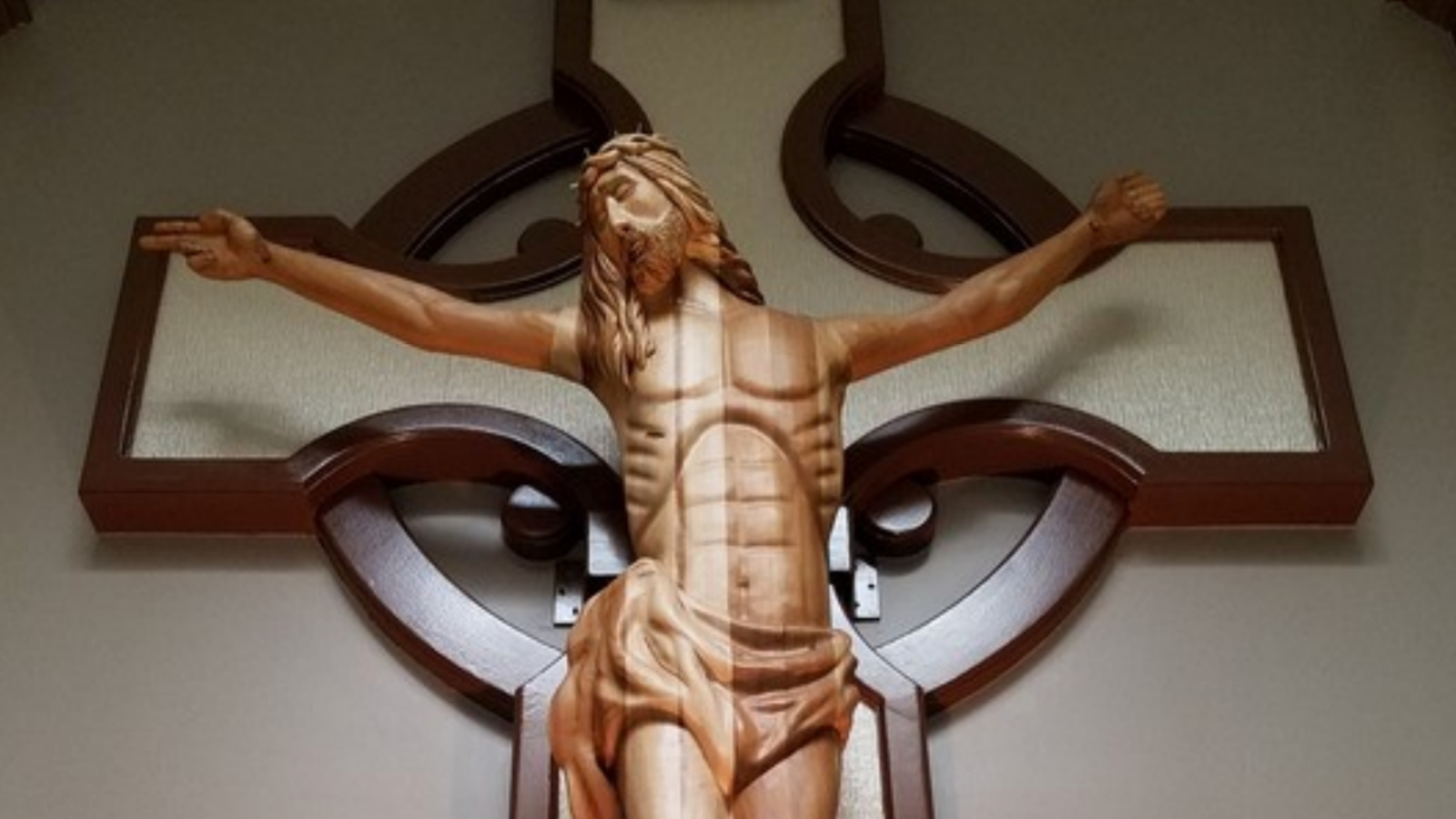
In 2019, for the fifth anniversary of the installation of the Crucifix, Marty Hebert shared with the parish:
“I am Marty James Hebert, the prisoner in Angola who carved the Corpus for St. Brendan’s Catholic Church. I feel honored to write a letter for the 5th anniversary commemorating its blessing.
I would like to thank Father Matthew and all the parishioners for the many letters I have received sharing your feelings of the carving I made. I am humbled to learn the Corpus has touched your hearts. I remember back when I was working on it, I would begin each day with a prayer asking God to grant me knowledge and to guide my hands so I could serve His purpose.
I have received letters from people telling me looking at the Corpus gives them a sense of peace from their daily troubles. I have received letters from people of different races each telling me to them the Corpus looks like their own people. Perhaps God’s will was for me to carve this Corpus in an image everyone can relate to, and to see an image that reminds everyone of the power of God’s love for us. If this was God’s will for me, then I believe I served Him successfully.
I would like to thank Father Matthew and all the parishioners at St Brendan’s for their prayers and for providing me with the opportunity to serve our Lord in such a grand manner.”
Read the full story of St. Brendan’s Crucifix here.

